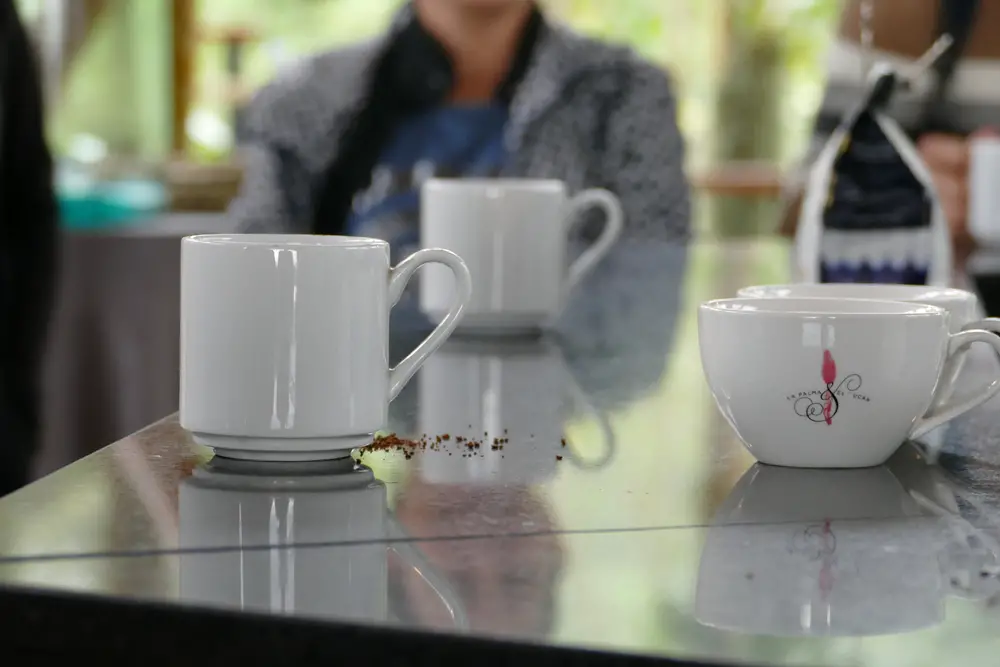Turkish coffee contains one of the highest amounts of caffeine per serving. The beans are preferably lightly roasted and soaked in water for an extended period of time to produce a robust coffee with an authentic taste.
Cuban coffee, on the other hand, is similar to an espresso, with a special type of sugar added to add some sweetness to the strong, otherwise bitter brew. This is the most popular type of coffee in Cuba and is also popular in parts of Florida.
Table of Contents
What is Cuban coffee?
As part of the great Spanish empire, Cuba was a focus for the cultivation of the caffeine bean for Spanish consumption, beginning as early as the mid-17th century. This coffee culture even grew when French farmers fleeing the French Revolution began growing coffee in Cuba as well.
At the time, however, Cuban coffee was still in its infancy, and while Cuba was a leading coffee exporter, it lacked something: a cup of coffee to truly call your own.
Unlike most coffee varieties in the world, such as the classic café latte or flat white, Cuban coffee, also known as Cuban espresso or cafecito, is more recent.
This type of coffee first emerged when the Italians brought espresso machines to the island nation, and it’s grown in popularity ever since.
What is Cuban coffee known for?
Like any other coffee, Cuban coffee, or cafecito, has its own flavor profile influenced by the preferences of its culture of origin. Cuban coffee is often referred to as “sweet coffee” because Cuban espresso is just that: sweet.
One of the main characteristics of Cuban coffee is that it is mostly brewed in a moka pot. If you’ve ever tried brewing coffee in a moka pot, you know that it has a reputation for being extremely bitter.
Cuban coffee is definitely the coffee of the extremes with its already sweet flavor profile: a sweet-bitter mix of coffee and sugar.
How is Cuban coffee made?
Cuban coffee requires special ingredients. However, most of the ingredients are readily available.
- 16 grams of medium roast coffee beans
- Water
- A generous amount of Demerara sugar (a special type of cane sugar).
Here are the things you need to prepare before making Cafecito or Cafe Cubano.
Preparation of the Cuban coffee
- Fill the boiling water in the moka pot up to the valve.
- Add the coarsely ground coffee. Distribute the ground coffee evenly.
- Turn the heat up to high. Watch until the first drops of coffee come out. If that’s the case, skim them off with a spoon.
- The azuquita (creamy foam, espuma). In a pitcher, whisk together the Demerara sugar and coffee you just scooped out to desired consistency.
- Pour the coffee from the moka pot into the pot.
- Serve.
- It all seems a bit unclear to me. Does it need 2 cans? How much coffee do you have to skim, here it seems as if you only have to skim the first drops.
What is Turkish coffee?
Turkish coffee is known around the world for its rich flavor and eye-catching foam.
It is a traditional coffee made by slowly heating finely ground coffee in water to boiling point. A unique Turkish coffee pot, the cezve or ibrik, made mostly of copper, has been used for this purpose for years.
Brewing coffee by boiling is the oldest method in the world. This method was the dominant one until the late 19th century. Then sophisticated devices for preparing coffee were developed, such as filters, coffee pots, mocha pots, etc.
When preparing Turkish coffee, very finely ground coffee is placed in cold water and slowly heated.
This slow heating allows the coffee beans to release all of their aromas, including aromatic oils, into the water, which is not the case with other brewing methods. The aromatic oils in the coffee beans are released at exactly 96°C, which is why Turkish coffee needs to be heated to this point. However, it should not be boiled so that the bitter acids do not dissolve in the coffee.
The coffee beans for Turkish coffee are roasted medium to dark and then ground very finely, finer than espresso. Turkish coffee should be ground so finely that it resembles a powder. If
If the grind of the coffee is not fine enough, it gets lost in the drink and spoils the enjoyment of the coffee. There will also be no froth on the coffee.
Differences between Turkish and Cuban coffee
Cuban coffee:
- Cuban coffee is usually brewed using a moka coffee maker.
- Demerara sugar is added, which is essential to qualify as Cuban coffee.
- Roasted espresso beans are usually used.
Turkish coffee:
- Often contains ground cardamom.
- A medium to dark roast is good, but not too dark or it will be too bitter.
- ibrik or cezve is used for the preparation.
- Sugar is an ingredient in Turkish coffee. That means you can add as much sugar as you like.



